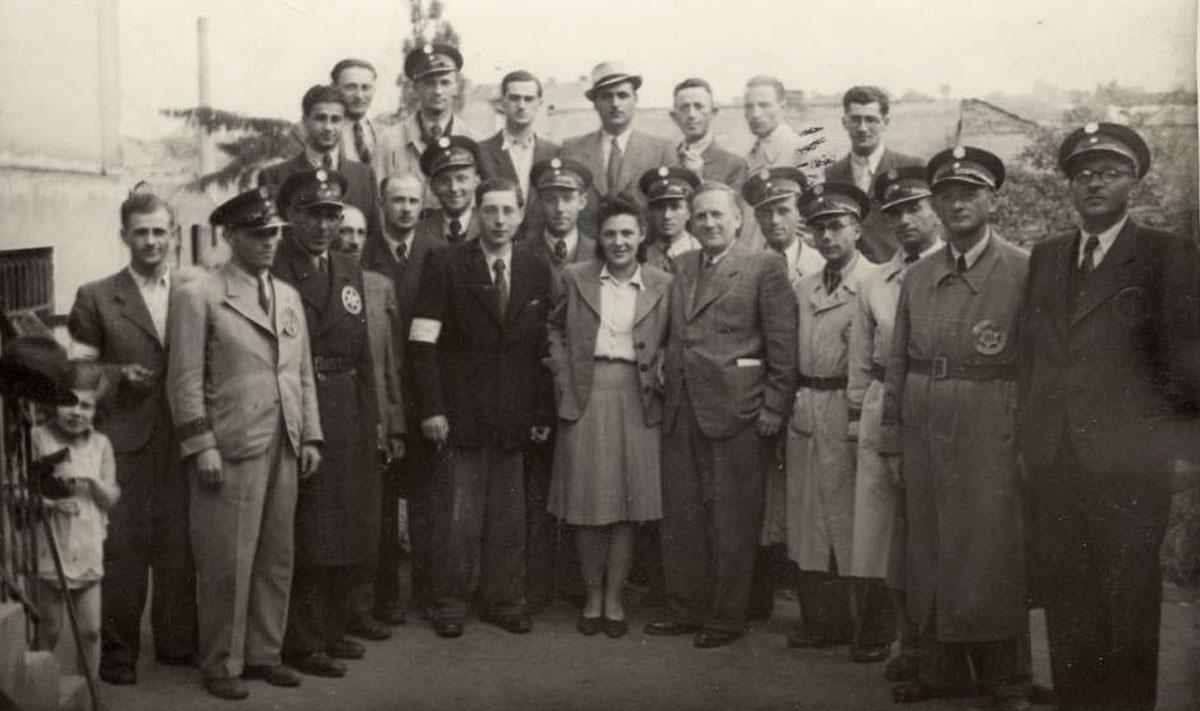Approximately 2,500 Jews lived in Bochnia, Poland, between the two world wars. They worked primarily in trade, crafts and industry.
On 3 September 1939, the Germans occupied Bochnia and started to seize Jews for forced labor. Jewish craftsmen were taken to workshops within the city. In 1941 the deportation of Jews to labor camps in the area began. Despite this, the Jews of Bochnia attempted to maintain normal lives to the extent that this was possible. Self-aid was organized, and a clinic and soup kitchen were opened.
On 16 March 1942, a sealed ghetto was established in Bochnia. The Jews who worked outside of the ghetto smuggled food into the ghetto, despite the anticipated punishments of imprisonment or deportation to a labor camp if they were to be caught.
This wedding was held in June 1942. Standing next to the bride and groom are members of the Jewish ghetto police and members of the Judenrat, the Jewish council in Bochnia.
Two months after this photograph was taken, on 24 August 1942, the first Aktion in the Bochnia ghetto began. The majority of the inhabitants of the ghetto were deported to the Belzec death camp. Those who had hidden and were caught were murdered on the spot. After the Aktion, murders took place sporadically in the ghetto. In two additional Aktions, in late 1942 and late 1943, those Jews lacking the proper work permits were deported to Belzec along with the women and children. The patients in the hospital were murdered along with part of the medical staff, and a few of the remaining Jews of the ghetto were sent to labor camps.
On 1 October 1943, Bochnia was declared to be “Judenrein”, empty of Jews.
Yad Vashem Photo Archives 3939/4







